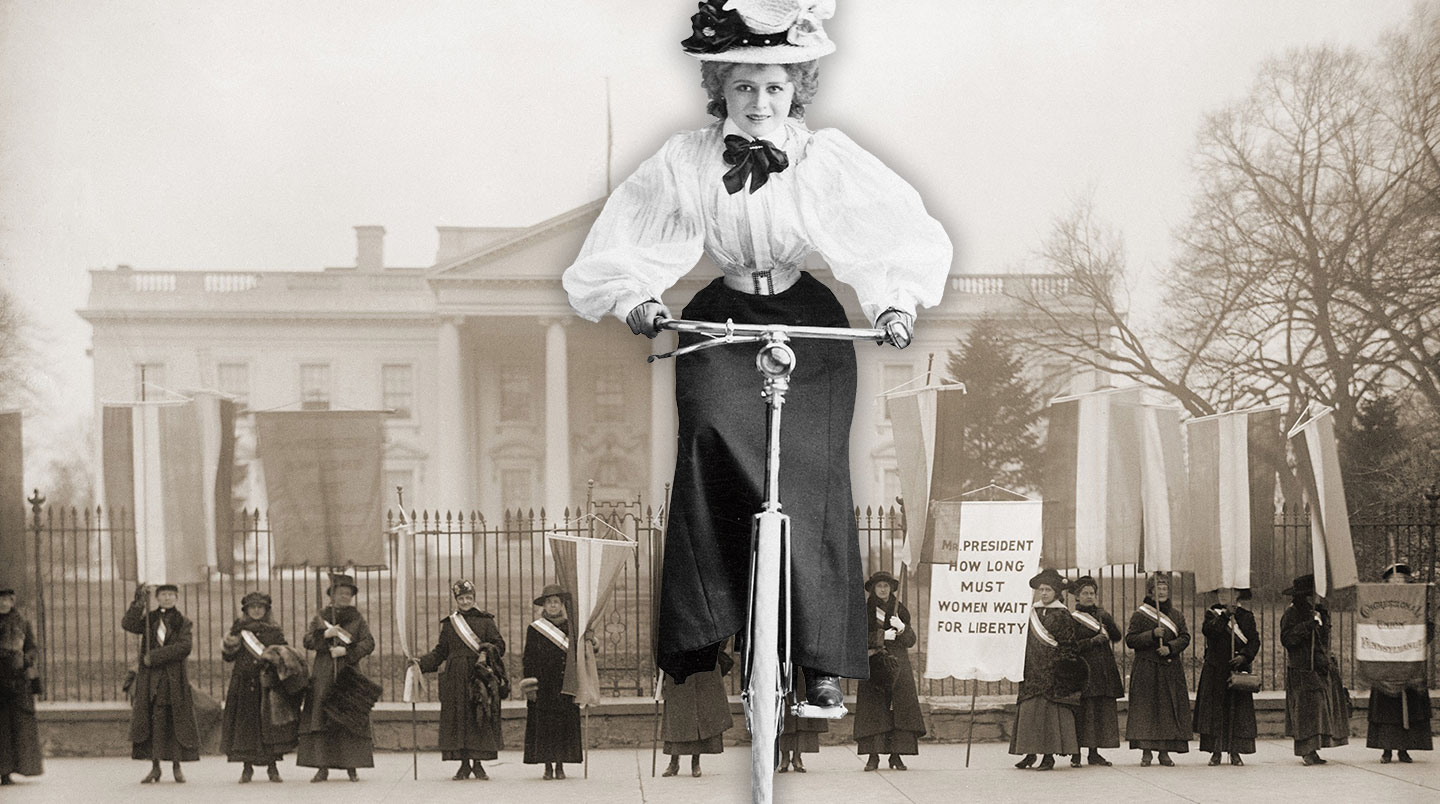Maybe you know what it’s like to be trapped at home.
You don’t have a driver’s license. There are plenty of places to go. But they’re all too far away to walk to. You’re stuck with nothing to do—until you get on your bike.
Suddenly, you’ve got the wind at your back. The wheels carry you faster than your legs ever could. Everything is within reach: the park, the basketball courts, your best friend’s house. The world is yours to explore.
That’s how women felt when the bicycle first became popular. It wasn’t just a machine with two wheels, a seat, and pedals. It was a ticket to freedom.
Have you ever felt like you were trapped in your own home? There are plenty of places you want to go. But they’re all too far away to walk to, and you don’t have a driver’s license. You’re stuck inside, staring at the walls—until you get on your bike.
The wheels go faster than your legs ever could. You can go anywhere: the park, the basketball courts, your best friend’s house. You can explore the world!
A long time ago, that’s how bikes made women feel. For them, a bike was not just a machine with two wheels. It was a ticket to freedom.
Have you ever felt like you were trapped in your own home? There are plenty of places you want to go. But they’re all too far away to walk to, and you don’t have a driver’s license. You’re stuck inside, staring at the walls—until you get on your bike.
Now the wind is at your back, and the wheels are carrying you faster than your legs ever could. The park, the basketball courts, and your best friend’s house are within reach. The world is yours to explore.
That’s the same feeling women experienced when the bicycle first became popular. It wasn’t just a machine with two wheels, a seat, and pedals. It was a ticket to freedom.

